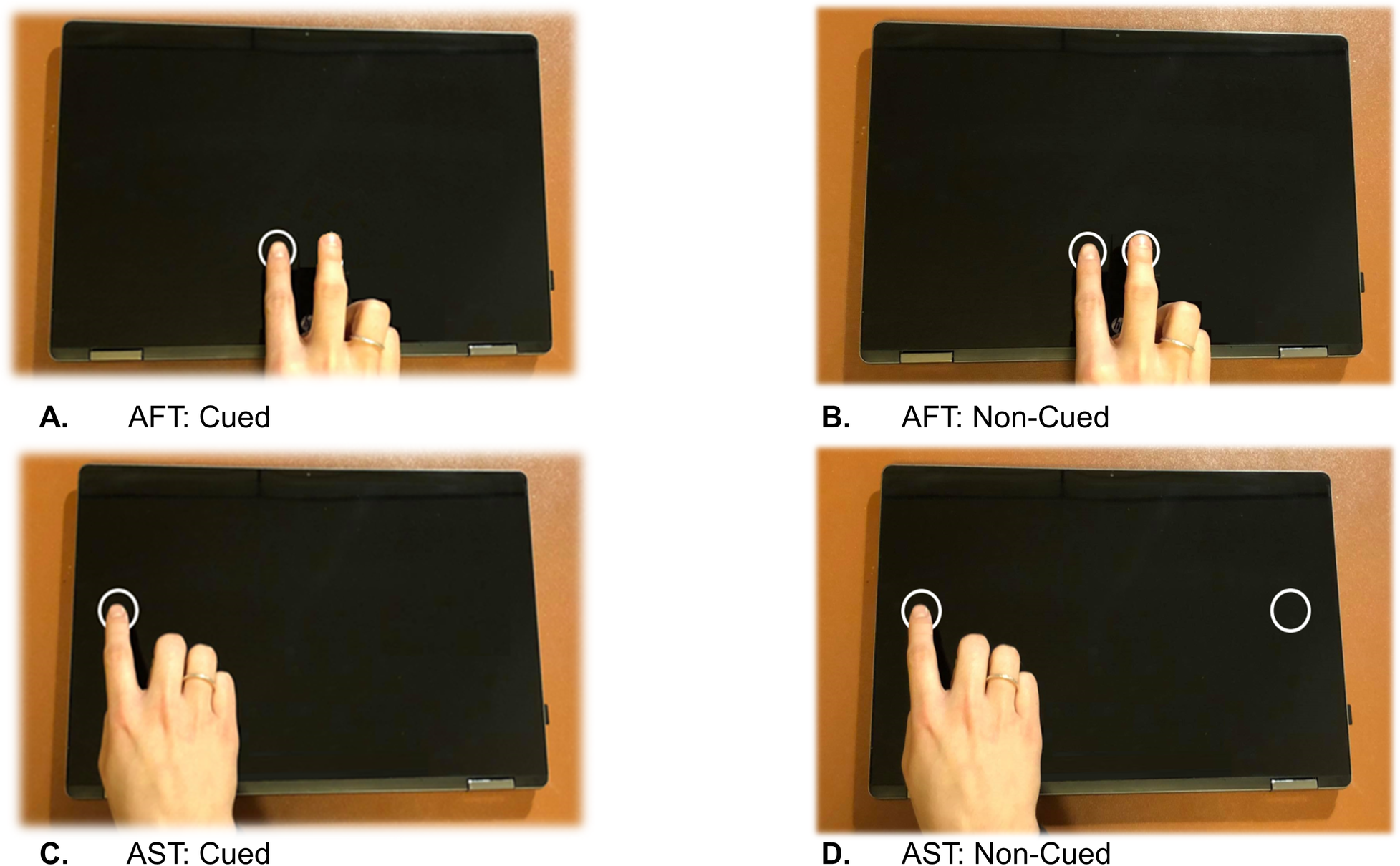Parkinson’s disease (PD) is a progressive neurodegenerative disease that affects almost 2% of the population above the age of 65. To better quantify the effects of new medications, fast and objective methods are needed. Touchscreen-based tapping tasks are simple yet effective tools for quantifying drug effects on PD-related motor symptoms, especially bradykinesia. However, there is no consensus on the optimal task set-up. Therefore, we have compared four tapping tasks in 14 healthy participants to identify the optimal design choices to be further validated in PD patients.
In alternate finger tapping (AFT), tapping occurred with the index and middle finger with 2.5 cm between targets, whereas in alternate side tapping (AST) the index finger with 20 cm between targets was used. Both configurations were tested with or without the presence of a visual cue. Moreover, for each tapping task, within- and between-day repeatability and (potential) sensitivity of the calculated parameters were assessed.

Visual cueing reduced tapping speed and rhythm, and improved accuracy. This effect was most pronounced for AST. On average, AST had a lower tapping speed with impaired accuracy and improved rhythm compared to AFT. Of all parameters, the total number of taps and mean spatial error had the highest repeatability and sensitivity.
The findings suggest against the use of visual cueing because it is crucial that parameters can vary freely to accurately capture medication effects. The choice for AFT or AST depends on the research question, as these tasks assess different aspects of movement. These results encourage further validation of non-cued AFT and AST in PD patients.
Read the full publication here.

